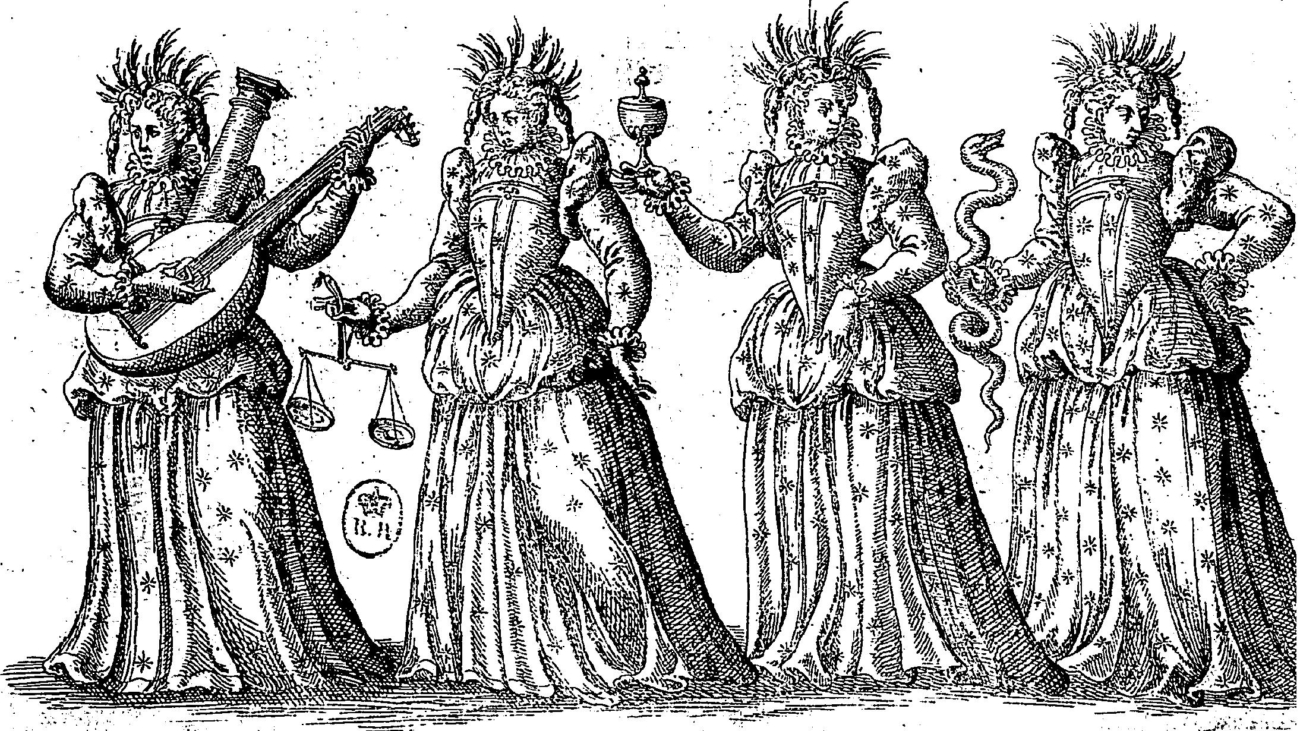In his Paradoxes of the Highest Sciences, Eliphas Levi explicitly connects the Four Powers of the Sphinx with the four cardinal virtues:
Moses, in causing the construction of the Ark of Alliance, made a concession to the idolatry of the Jewish populace, and the golden calves of Samaria were later only counterfeits of the Keroubim of the ark; these Keroubim or Cherubim were two-headed Sphinxes; there were two Cherubim and four heads, one of a child, the other of a bull, the third of a lion and the fourth of an eagle. It was a reminiscence of the Gods of the Egyptians, Horus, Apis, Celurus, and Hermomphta; symbols of the four elements and signs of the four cardinal points of the heaven they served as emblems of the four cardinal virtues–prudence, temperance, strength and justice. These four hieroglyphic figures have remained in the Christian Symbology and they have been made the insignia of the four evangelists.
In summary:

The Man/Child
To know (scire)
Prudence (phrónēsis): to know how to exercise judgment in particular cases

The Bull
To will (vele)
Temperance (sōphrosýnē): to train the bodily appetites to accept the restraint imposed by reason

The Lion
To dare (audere)
Courage (andreía): the rational response to the challenge presented by danger

The Eagle
To keep silent (tacere)
Justice (dikaiosýnē): to give what each person deserves
According to Aristotle, virtues are created either by educating a person or training a natural disposition to accord with reason. For instance, we all have a natural “spirited” disposition which we can train to be brave and not rash. We all have bodily appetites which can be trained to accept restraint, etc. In The Magical Ritual of the Sanctum Regnum, Levi implies a similar idea in his discussion of the temperaments and the elementals: they can be trained to transform from disruptive spirits possessing us into reliable character traits as represented by the Four Powers of the Sphinx.
These Elemental beings are related to, and bear an influence over persons, according as they are of one or other of the four Temperaments. The Gnomes are related to the Melancholic type, Salamanders to the Sanguine, Undines to the Phlegmatic, and Sylphs to the Bilious Temperament. Their symbols are those of Taurus the Bull for Gnomes; Leo the Lion for Salamanders; the Eagle for Sylphs; and the sign of Aquarius for Undines. Their Rulers are respectively Ghob, Djin, Paralda, and Nicsa. The combination of these four types of face and being represents the Created Universe, a complete and eternal entity, Man in fact, the Microcosm; and this is the first formula of the mystical explanation of the enigma of the Sphynx.
The virtues are related to one another in complex, mutually supporting ways in both Plato’s and Aristotle’s writings. For instance for Plato, justice keeps the other three in balance, thereby properly balancing the three parts of the soul. For Aristotle prudence tells you how to apply intelligence to transform your natural dispositions into virtues, etc.
Similarly in The Great Secret Levi says, “When one does not know, one should will to learn. To the extent that one does not know it is foolhardy to dare, but it is always well to keep silent.”
Similar to Plato and Aristotle, Levi says the purpose of developing the Four Powers is to perfect the individual, to prepare him, as Levi says, for Love. The example he gives in The Great Secret of such a perfected individual is Odysseus—he overcomes all challenges, makes his way back home, and wins Penelope back.
To attain such an achievement it is necessary to KNOW what has to be done, to WILL what is required, to DARE what must be attempted and to KEEP SILENT with discernment.
Homer’s Odysseus had to contend with the gods, the elements, the Cyclops, the sirens, Circe, etc. … that is to say with all the difficulties and dangers of life.
His palace is invaded, his wife is pestered, his goods are plundered, his death is resolved on, he loses his comrades, his ships are sunk; at last, he alone is left to fight it out against the night and the sea. And single-handed he sways the gods, he escapes from the sea, he blinds the cyclops, he cheats the sirens, he masters Circe, he re-takes his palace, he rescues his wife, he slays those who were plotting his death; because he willed to see Ithaca and Penelope again, because he always knew how to extricate himself from danger, because he dared what had to be done and because he always kept silent when it was not expedient to speak.
The ethical dimension of the Four Powers—and in many cases of magic and spirituality overall—is effaced by Aleister Crowley in his own account in Liber Aleph. He keeps the idea that the Four Powers prepare us for love, but the rest is largely obscurantist. Levi’s comparatively lucid account of the Four Powers of the Sphinx provides us with the groundwork for a training in virtue as propaedeutic to the study of ceremonial magic.
